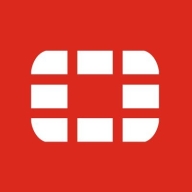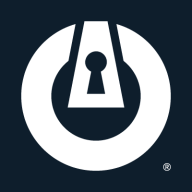


ThreatLocker Zero Trust Endpoint Protection Platform and WatchGuard Firebox are contenders in the cybersecurity space. ThreatLocker has the upper hand in zero-trust strategies and application-level control, while WatchGuard excels in network-level security management.
Features: ThreatLocker's Zero Trust model focuses on application control, ring-fencing, and storage management, offering centralized management and reducing help desk tickets. WatchGuard Firebox is known for its traditional firewall features, such as VPN setup, VLAN management, and excellent reporting capabilities, alongside strong GUI usability and VPN connectivity.
Room for Improvement: ThreatLocker could improve integration with PSA systems and approval processes, as well as enhance visibility and reporting customization. WatchGuard Firebox users desire better cloud service integration, improved documentation, and more intuitive management interfaces, with enhancements in reporting and management to reduce false positives.
Ease of Deployment and Customer Service: WatchGuard Firebox receives praise for easy on-premises deployment and responsive customer support. ThreatLocker is acknowledged for effective cloud deployment and supportive service, though there's a call for more educational resources and extended tech support hours.
Pricing and ROI: ThreatLocker is viewed as fairly priced with notable value, though pricing model adaptability is a challenge. WatchGuard Firebox is competitively priced, especially with bundled security suites, offering strong ROI by reducing management time and effectively preventing threats.
Clients are now comfortable and not wasting productive hours on IT support.
The automation part is giving us a cost benefit and speed; we can react faster.
It's a very useful tool to mitigate and protect your enterprise.
If something were to happen without ThreatLocker, the cost would be huge, and thus, having it is definitely worth it.
The main return on investment is peace of mind, knowing that with ThreatLocker on any endpoint, it will almost always block all malicious code or exploits, even zero-day exploits.
It keeps malware, Trojans, and ransomware at bay.
The quick resolution of issues with Fortinet FortiGate is due to the support of the company and the fact that the equipment is easy to work with.
I would rate the technical support for Fortinet FortiGate a ten out of ten.
As a solution provider, when I encounter problems, I connect directly with Fortinet support, and they provide solutions within a very short time.
They have been very responsive, helpful, and knowledgeable.
I would rate their customer support a ten out of ten.
Their support is world-class.
On a scale of one to 10, I would rate the technical support of the WatchGuard Firebox a 10.
Finally, we connected with someone, and I would rate their support as eight or nine out of ten once we were able to speak with them.
The technical support is good.
They scale up really well from smaller models like the FortiGate 40 and 50 to bigger sites with the FortiGate 100 for more throughput - up to enterprise datacenters.
The variation comes in terms of the interfaces and throughputs, but from a security perspective, you get the same benefit, irrespective of whether you have an entry-level unit or an enterprise.
We determine sizing based on multiple factors: number of users, available links, traffic types, server count, services in use, and whether services will be published.
I started off with just the servers, and within a month and a half, I set up the entire company with ThreatLocker.
It seems to primarily operate on the endpoints rather than at a central location pushing out policies.
I would rate it a ten out of ten for scalability.
The user interface and features compared to newer firewalls are not up to the mark, which includes functionalities such as filtering, web filtering, threat protection, user identity, and UTM features that need improvement.
If we're going for more concurrent users, we need to change the entire box.
I find the WatchGuard Firebox scalable, as it's easy to change configurations from this product to another one.
We're experiencing 99.999% availability consistently.
I would rate the stability of Fortinet FortiGate a ten out of ten.
Currently, we are experiencing a general outage of one of the main internet service providers of the Dominican Republic, and we have not been impacted in our operations because with SD-WAN, we have another internet service provider and we are working with the second WAN connection without any disruption.
For five years, we have not had a problem.
Once deployed, it downloads the policies locally, so even if the computer doesn't have internet, it doesn't matter.
It has been very stable, reliable, and accessible.
There are issues with traffic hitting the firewall, which could indicate performance problems related to throughput.
When considering Sophos XG, which we also use, the logging and reporting functionality is notably more efficient.
These sessions should be around five to ten minutes long, allowing users and partners to quickly grasp the information without disrupting their daily tasks.
The solution should be able to implement machine learning and analytics of all the logs for threat detection and protection.
Controlling the cloud environment, not just endpoints, is crucial.
This is problematic when immediate attention is needed.
Comprehensive 24-hour log monitoring is a valuable enhancement for both business and enterprise-level users.
The cost for renewal after three years is 75% of the hardware cost, which is a significant problem.
When implementing a rule using a group of IPs, it is not possible to do that directly.
It is also difficult to diagnose issues if any devices get compromised; for example, if someone hacks our system, it becomes hard to trace who made changes or accessed the firewall.
Last year, I renewed the support for three years, which can sometimes be expensive but depends on the security benefits and how it helps us.
It offers cost savings as it is generally cheaper than the competition.
It is about 20% cheaper.
After conversations with other partners, it became clear we underpriced it initially, which caused most of our issues.
We are moving towards the Unified solution, where they basically bundle everything together, providing us better stability with the ability to bring in new product offerings without having to go back to the customer and say, 'This is going to cost you.'
I had a really good deal at the time, and it continues to be cost-effective.
When we tried to renew the Palo Alto license, the cost was beyond any reasonable range.
It's expensive us here.
I have faced challenges with the WatchGuard Firebox regarding price since we work with customers who use the Stormshield product, which is less expensive and French-made.
These features help reduce our downtime, manage the ISPs, and deploy SLAs for all the website traffic.
The most valuable feature of FortiGate is FortiView which provides proactive monitoring.
We got a firewall and gave an SSL VPN to my client to connect to their servers, after which, such kind of activities involving ransomware attacks stopped.
ThreatLocker Zero Trust Endpoint Protection Platform's ability to block access to unauthorized applications has been excellent.
It protects our customers.
The major benefit is fewer breaches overall, as nothing can be run without prior approval. This helps my company protect its data and secure itself effectively.
The Firebox offers valuable features such as network security, URL filtering, UTM features, intrusion prevention and detection, and authentication.
Basically, we have received a good return on investment.
I utilize AI within the WatchGuard Firebox, as we use the interconnection with threat syncs, and AI is implemented.


| Company Size | Count |
|---|---|
| Small Business | 357 |
| Midsize Enterprise | 132 |
| Large Enterprise | 188 |
| Company Size | Count |
|---|---|
| Small Business | 32 |
| Midsize Enterprise | 4 |
| Large Enterprise | 3 |
| Company Size | Count |
|---|---|
| Small Business | 92 |
| Midsize Enterprise | 25 |
| Large Enterprise | 15 |
Fortinet FortiGate is a versatile network security tool offering features like VPN, firewall, web filtering, intrusion prevention, and scalability. It is known for its performance and integration with other Fortinet products, making it a preferred choice for robust cybersecurity.
Fortinet FortiGate stands out as a comprehensive cybersecurity solution with strong performance and ease of configuration. It delivers unified threat management, integrating features such as dynamic routing, SD-WAN support, and centralized management. Despite its strengths, improvements in the web interface's stability, pricing structures, and reporting capabilities are needed. Users seek better integration with third-party tools and automation advancements to enhance the experience further. These enhancements, alongside improvements in bandwidth management and the reduction of licensing costs, are points of interest for users looking to capitalize on FortiGate's extensive capabilities.
What are Fortinet FortiGate's key features?Fortinet FortiGate is widely implemented across industries as a primary firewall system for securing internet gateways and safeguarding data centers. It supports businesses in achieving SD-WAN integration and enhances cybersecurity by providing essential features like antivirus, web filtering, and application control. Enterprises utilize FortiGate for securing remote connections and ensuring compliance with security standards, making it adaptable for different network sizes and industries.
ThreatLocker Zero Trust Endpoint Protection Platform empowers organizations with application control, selective elevation, and ring-fencing to enhance security and prevent unauthorized access.
ThreatLocker provides comprehensive security management using application allowlisting to ensure only approved software operates across servers and workstations. The platform's centralized management simplifies security processes by consolidating multiple tools, and its robust capabilities align with zero-trust strategies by actively blocking unauthorized applications and ensuring compliance. Users note intuitive features such as mobile access, helpful training resources, and responsive support, which effectively reduce operational costs and help desk inquiries. The managed service providers prefer ThreatLocker to maintain network integrity by preventing malicious scripts and unauthorized access attempts. However, users identify room for growth in training and support flexibility, the interface, and certain technical challenges like network saturation from policy updates.
What are the most important features?Organizations utilize ThreatLocker for application allowlisting, ensuring only authorized software operates to prevent unauthorized access efficiently. Deployed across servers and workstations, its features support zero-trust principles and are favored by managed service providers for application management and network integrity.
WatchGuard Firebox is a high-performance firewall known for its ease of setup, offering robust security with layered protection and centralized management capabilities.
WatchGuard Firebox stands out for its intuitive management and high throughput, addressing security needs with features like VPN, web filtering, and threat detection. Its centralized control and reporting abilities, along with Active Directory integration, make it popular among varied organizations. Its user-friendly interface and ongoing updates enhance usability and reliability. However, there's a call for better cloud-based administration, scalability, and improved integration with third-party vendors.
What are the key features of WatchGuard Firebox?WatchGuard Firebox is implemented across industries to secure internet gateways and protect data in multi-site businesses. Its applications span from Unified Threat Management (UTM) and intrusion prevention to compliance support in business environments requiring secure connectivity through VPNs.
We monitor all Application Control reviews to prevent fraudulent reviews and keep review quality high. We do not post reviews by company employees or direct competitors. We validate each review for authenticity via cross-reference with LinkedIn, and personal follow-up with the reviewer when necessary.